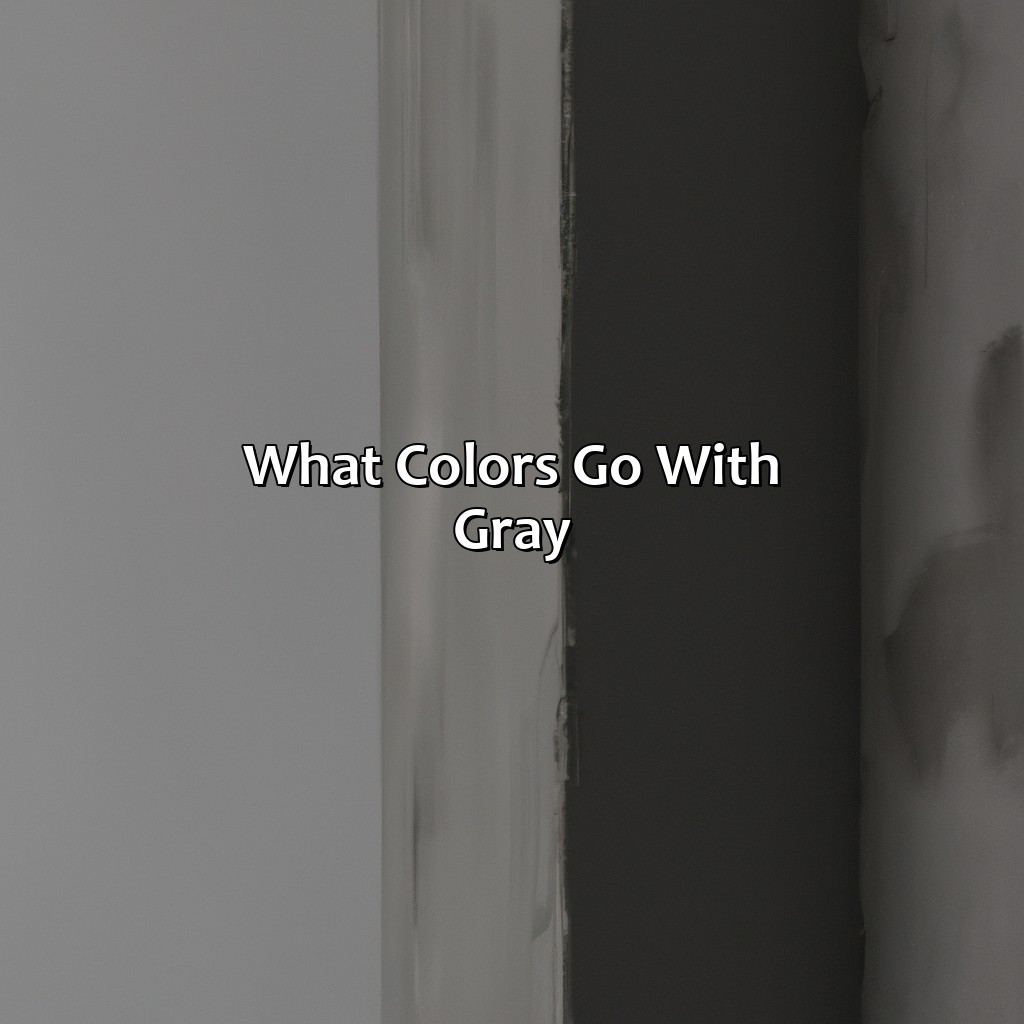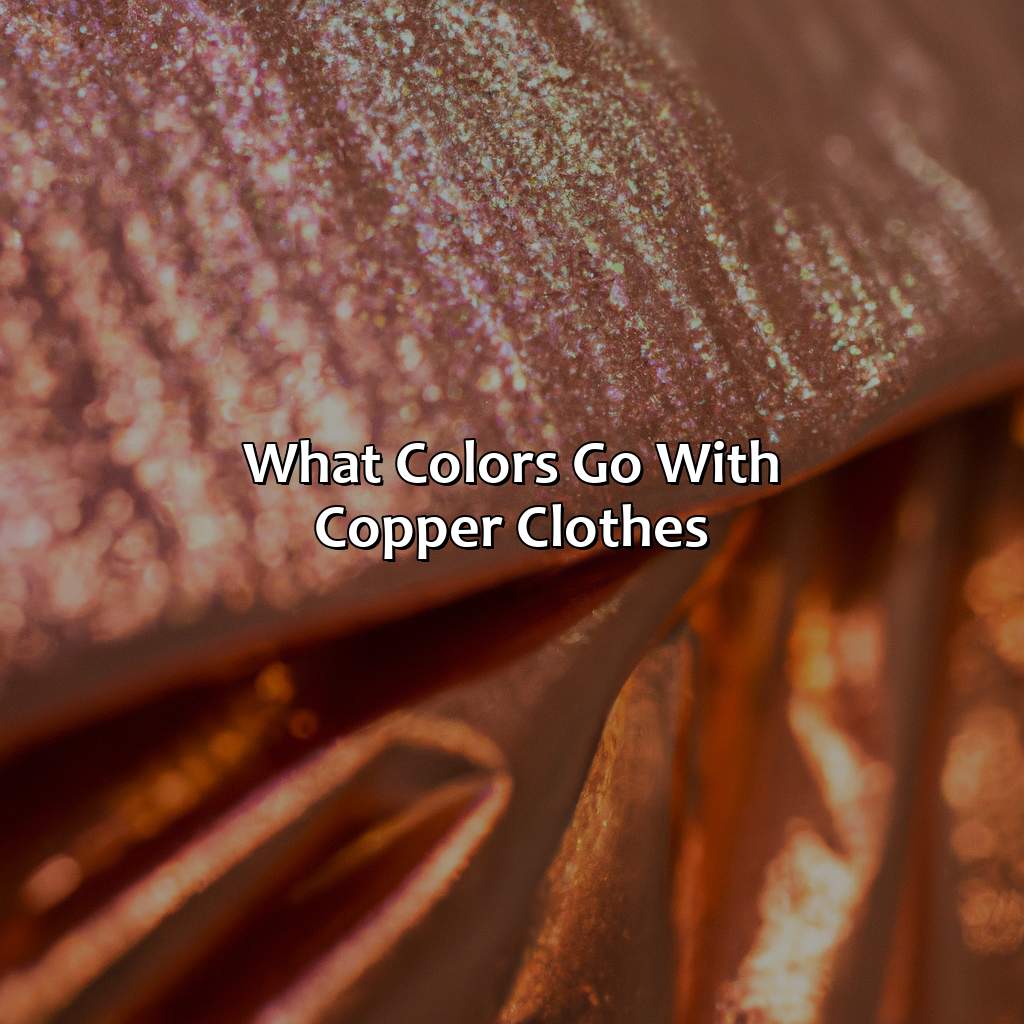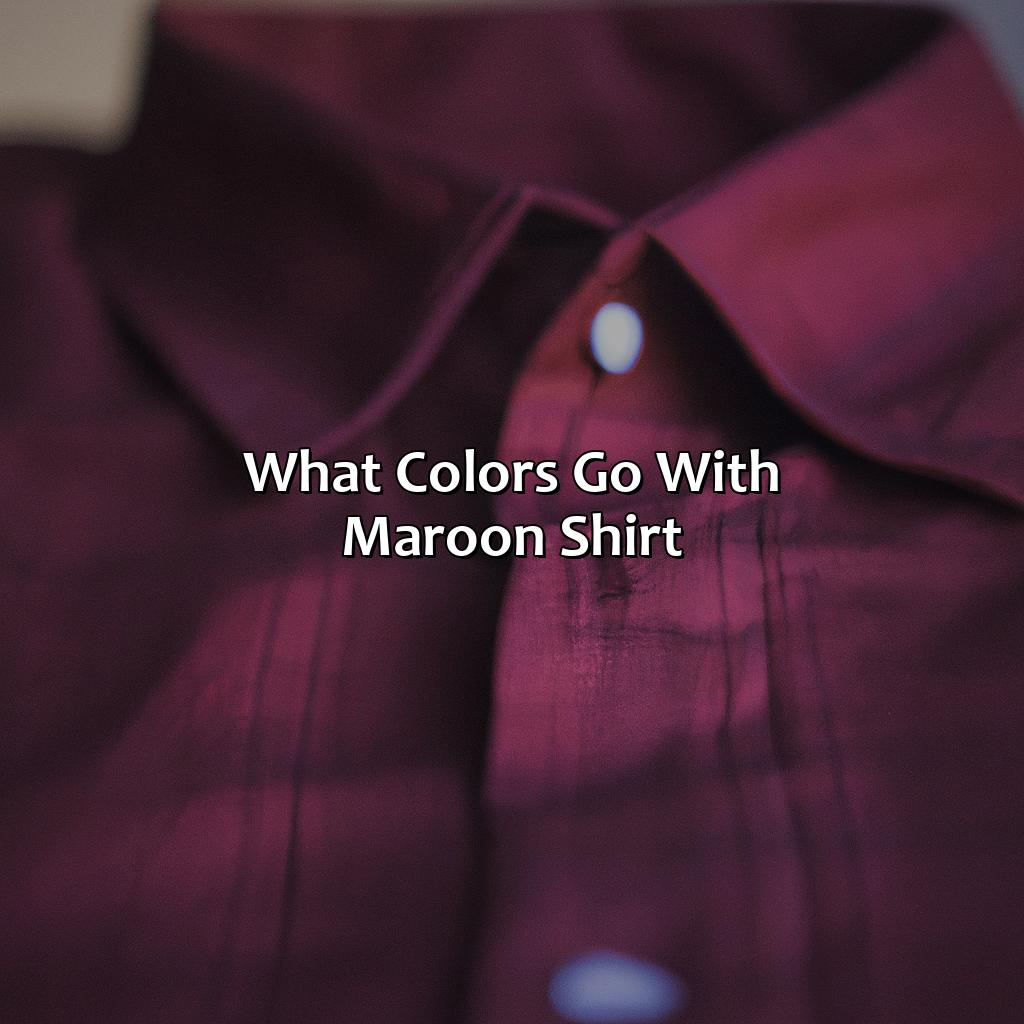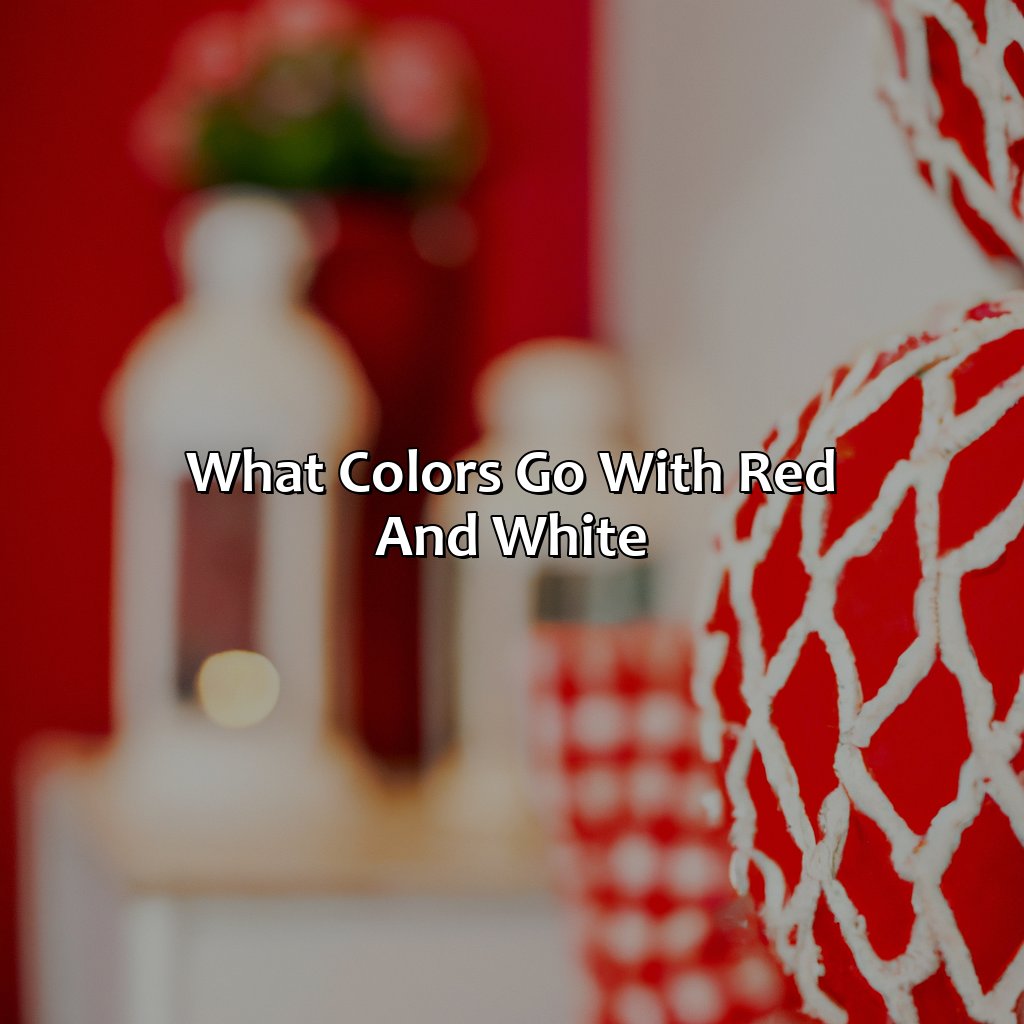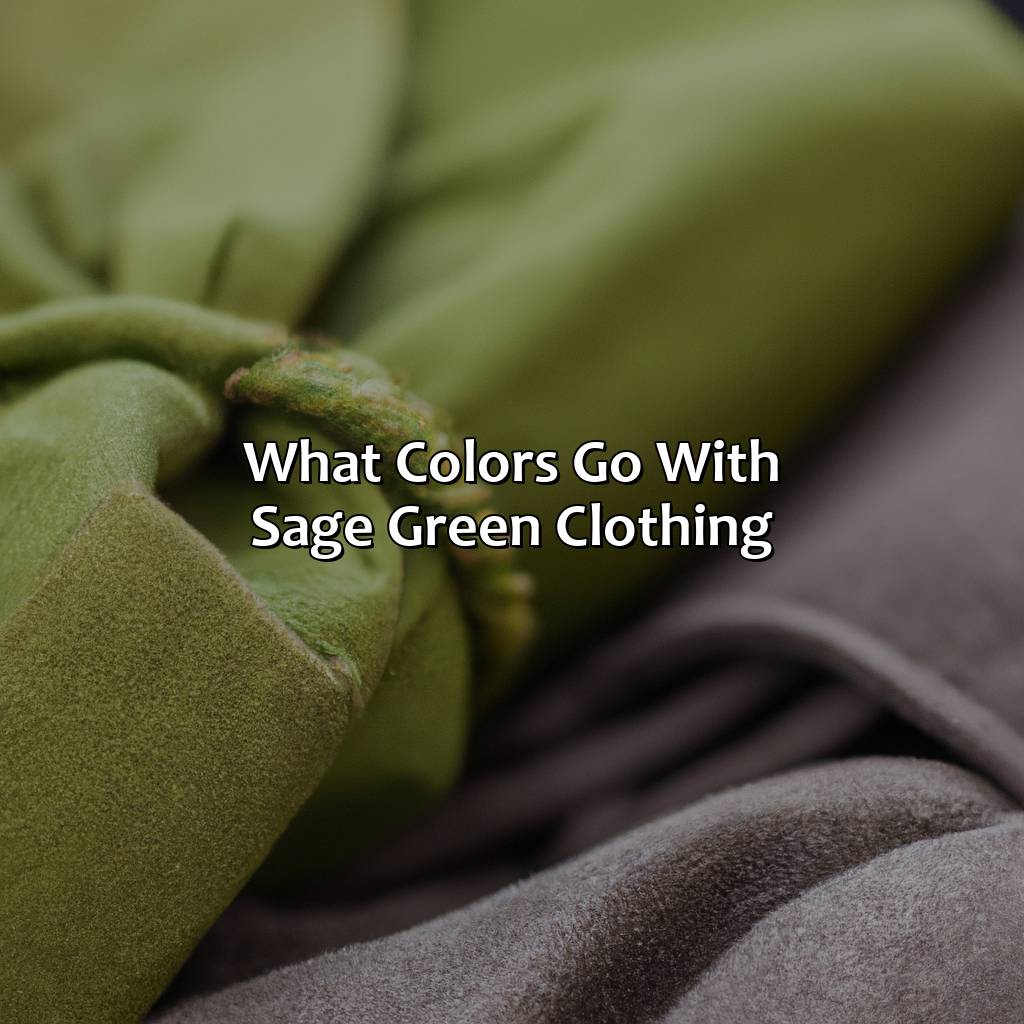Key Takeaway:
- Gray is a versatile color that can be paired with a wide range of other colors. It pairs well with neutral colors like black, white, beige, cream, and taupe, creating a sophisticated and timeless look.
- Gray can also be paired with bold colors like red, orange, navy, fuchsia, and yellow to add a pop of color to a room or outfit. Pastel colors like pink, pale blue, and lavender can create a soft and romantic feel, while bright colors like lime green and turquoise can add energy and vibrancy.
- When using gray as a dominant color, it is important to play with different textures and shades of gray to create interest and depth. Gray also works well as an accent color, adding a touch of sophistication to any color scheme.
Color Combinations with Gray
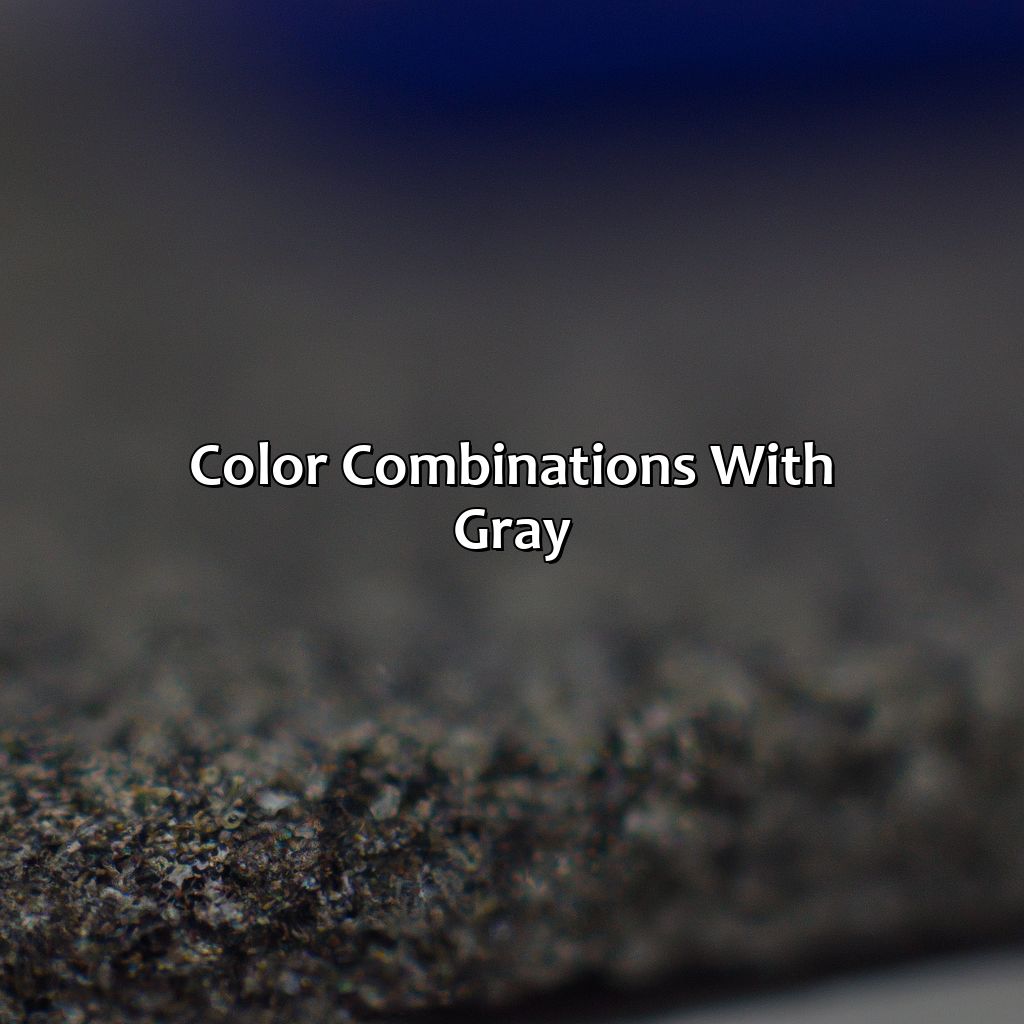
Photo Credits: colorscombo.com by Joe Martin
Create the perfect color combos with gray? We’ve got you! Here’s a list of colors that work well with gray:
- From black to white, beige to charcoal, cream to taupe.
- Or try bold colors like red, navy, and fuchsia.
- Pastels like pink, lavender, and blush pink.
- Or multiple bright shades like yellow and lime green.
- Gray also looks great with warm, cool, deep, and earthy tones.
There are so many possibilities!
Gray and Neutral Colors
Neutral colors complement gray seamlessly, making it an excellent color to create a calming, classic look. Gray pairs exceptionally well with black and white. It also coordinates perfectly with other neutral tones, such as beige, cream, charcoal, and taupe.
When paired with white, gray creates a clean and fresh feel. Black compliments the deep shade of gray and provides an elegant touch. Beige is a warm-toned neutral that looks particularly appealing when paired with mid-tone gray. For a soft and gentle appearance, pair gray with cream or taupe.
To enhance the aesthetic appeal of gray and neutral combinations, using different textures is vital. By adding texture through fabrics like wool or carpets like sisal, it lends a cozy feel while retaining a contemporary style.
Playing with various shades of both colors is also significant in creating visual interest; lighter shades of grey will improve neutrality and work best for an overall calm theme scheme while complementing dark or bold accents.
Incorporating some gray accents into room decoration use as pillows or wall arts can improve aesthetic appeal without overwhelming space.
Pro Tip: Professionals recommend investing in quality paint from reputable brands at hardware stores since quality paints provide better coverage which enriches the elegance of any neutrals used alongside Gray.
Gray and bold colors go together like peanut butter and jelly, or more fittingly, like gray and red, gray and navy, gray and burgundy, and all the other fierce combinations waiting to be explored.
Gray and Bold Colors
Pairing Gray with Bold Colors
Gray is a versatile color that pairs well with both bold and neutral colors. Bold colors not only add an energetic feel to the decor but also accentuate the gray color. Combining gray with red, orange, brown, navy, burgundy, maroon, fuchsia, tangerine, brick red, chocolate brown or copper can create a striking look.
To make this pairing work effectively, use the bold colors in moderation. Using too much of them can overpower the gray and make it lose its impact. Balance the amount of bold colors used by supplementing them with different shades of gray and neutral colors.
Playing with textures is also an effective way to enhance the appearance of this pairing. Velvet or leather items help create a luxurious feel while rugs or blankets offer texture contrast to smooth surfaces.
Pro Tip: For a successful combination of gray and bold colors, include eye-catching accents like patterned throw pillows, artwork or curtains to create depth and interest in your space.
Gray and pastel colors go together like villains and their henchmen, creating a harmoniously sinister yet stylish duo.
Gray and Pastel Colors
Gray and Pastel Harmony: Combining Subtle Tones
Pairing gray with pastels creates a perfect balance between subtle and calming hues. The delicate contrast of pale shades against the cool grays evokes a sense of tranquility.
- Gray and Pink: Gray and blush pink create a soft, elegant aura while dusty rose brings a serene effect.
- Gray and Pale Blue: Cool pale blue, when combined with gray, highlights a refreshing ambiance.
- Gray and Lavender: A blend of gray with light purple creates an understated yet graceful atmosphere.
Playing with textures is essential when creating depth in a room. Pairing different textures together like linen, cotton or velvet will highlight the subtleties of pastel colors against the grays.
When it comes to bringing out distinction in color schemes, using contrasting elements can be effective. Using dark metals like steel or bronze against gray walls will bring out more contrast making the lighter tones pop.
Don’t miss out on how pastel shades add an extra dimension to any space when paired with grays. By incorporating them into your interior design scheme, you are sure to enjoy elegance, relaxation, and serenity all at once.
Gray is like the designated driver, responsible and reliable, but adding a pop of yellow or lime green can turn it into the life of the party.
Gray and Bright Colors
Gray and Bright Colors: Gray is known for its versatility and ability to complement other colors. When paired with bright colors, it creates a striking and modern look. Mixing gray with yellow can create an energetic and cheerful atmosphere, while pairing it with lime green can give a fresh and vibrant feel.
To balance the intensity of these bright colors, gray should be used as the dominant color and the bright shades as accents. For example, using gray as the wall color in a room adorned with yellow or lime green furnishings can create a stylish contrast.
When incorporating bright colors into a gray palette, it is important to use them in moderation to avoid overwhelming the space. Using pops of bright colors in accessories such as cushions or artwork can add dimension without overpowering the room.
Overall, creating a balance between gray and bright colors requires careful consideration of both color palettes and their specific tones. By following these tips, one can confidently mix and match different hues to achieve an aesthetically pleasing interior design.
Gray and muted colors, a match made in somber heaven.
Gray and Muted Colors
Gray is a versatile color that can be paired with a variety of other colors, including muted shades.
- Gray and sage, olive or mustard can create a muted but sophisticated look.
- Gray and mauve or lavender-gray will produce an elegant and serene look.
Pairing gray with muted colors allows for a subdued, yet still stylish ensemble. It’s important to consider the undertones of each color to ensure they complement each other.
When pairing gray and muted colors, it’s helpful to follow these pro tips:
- Stick to a curated color palette: Even though you’re using multiple colors, keeping a cohesive scheme will make the outfit look put-together.
Gray may be cool, but it knows how to heat things up when paired with warm colors like coral, gold, pumpkin, rust, and rust orange.
Gray and Warm Colors
Gray and Warm Colors
Gray is a cool neutral color that can complement other warm colors beautifully. Here are five points to consider when pairing gray with warm colors:
- Coral: The attractive pink-orange shade goes well with various shades of gray, from light to dark.
- Gold: Gray works best as a backdrop for the vivid, shiny tones of gold accessories or décor items.
- Pumpkin: Create an autumn mood in your living space by teaming pumpkin shades with dove gray walls or furnishings.
- Rust: Rusty hues add warmth and boldness to any room when paired with soft grays.
- Rust Orange: This earthy shade melds perfectly with cool-toned gray palettes.
As you explore using gray and warm colors together, remember to keep these tips in mind:
- Avoid overly bright shades that clash with gray.
- Use the color wheel to mix and match complementary tones.
- Consider the lighting conditions in your room, as they’ll impact the overall feel of the space.
- Adopt a balanced approach so that neither color dominates excessively.
It’s interesting to note that throughout history, gray has served as a base tone for other powerful colors like red or gold. In medieval times, coats of arms used a shield shape surrounded by an ornate gold border on a silver-gray field. Today, interior decorators use this same effect but adapt it according to modern tastes.
Gray and cool colors are the perfect match. It’s like a chill and refreshing breeze on a gloomy day.
Gray and Cool Colors
Gray is a versatile color that pairs perfectly with cool tones, such as blue, green, and teal. The combination of gray and blue creates a serene and calming atmosphere, while gray and green blend to create an earthy yet sophisticated look. Additionally, gray can give a powerful boost when paired with brighter cool colors like turquoise, mint, and indigo.
To make the most out of your gray and cool-colored palette, consider varying textures. Utilize fabrics like wool or linen for a cozy feel or opt for leather for an elegant touch. Playing with shades of gray in your décor can also add depth and interest to a space. Use light grays to create openness in smaller rooms or choose darker shades for a dramatic effect in larger areas.
If you want to use gray as a dominant color but worry it may become too overwhelming, consider using it as an accent color instead. Using smaller accents in various shades of gray can help balance the room while also creating visual interest.
Gray and earthy tones – the perfect combination for when you want to feel grounded and metal at the same time.
Gray and Earthy Tones
Gray, being a neutral color, goes perfectly well with earthy tones. The combination creates a modern and sophisticated ambiance that can be utilized in both traditional and contemporary settings. Earthy tones have natural hues that work harmoniously with gray to make the environment calming and welcoming. Using gray as the dominant color is an art that requires careful choices.
For those looking to add some glamour to their space, combining gray with metallic colors is an amazing idea. The blend gives an aesthetic and luxurious vibe that adds depth and dimensionality. The contrast between the two creates a unique balance that transforms any room into a jaw-dropping haven of beauty.
Incorporating different shades of gray, combined with various textures, is an excellent way to create a unique look. Gray can also be used as an accent color in a room dominated by earthy tones to spice things up remarkably. It is easy to see why using gray and earthy hues together has become increasingly popular among designers and homeowners alike.
Studies have shown that earthen neutrals like brown, beige, green, tan & white increase concentration and energy levels when mixed with metallic shades like silver & gold or industrial chic tones like black & concrete grey in working spaces.(source name). Pairing gray with deep colors is like adding a little mystery and depth to your color palette, kind of like a spy movie soundtrack.
Gray and Deep Colors
Gray is a versatile color that pairs well with a range of hues. Deep colors like wine, eggplant, cranberry, chartreuse, cobalt, and periwinkle are perfect companions to gray. These combinations impart an exquisite touch of elegance to any space or outfit.
Incorporating deep colors into gray rooms can create bold yet sophisticated accents, such as putting cranberry throw pillows on a gray couch. Combining textured fabrics and patterned fabrics in these shades adds depth and enriches the aesthetic appeal of the design.
When it comes to clothing, wearing gray pants with a wine-colored shirt adds dimension and interest to your outfit. Furthermore, adding chartreuse accessories like earrings or shoes will deepen the vibrancy and pizazz of your ensemble.
It’s important to note that this pairing has a rich history in fashion. Several designers have used these pairings for high-end fashion events and red carpets for years.
Gray can go from drab to fab by playing with different textures, shades, and using it as an accent color, making it a dominant force in any design.
Tips for Using Gray as a Dominant Color
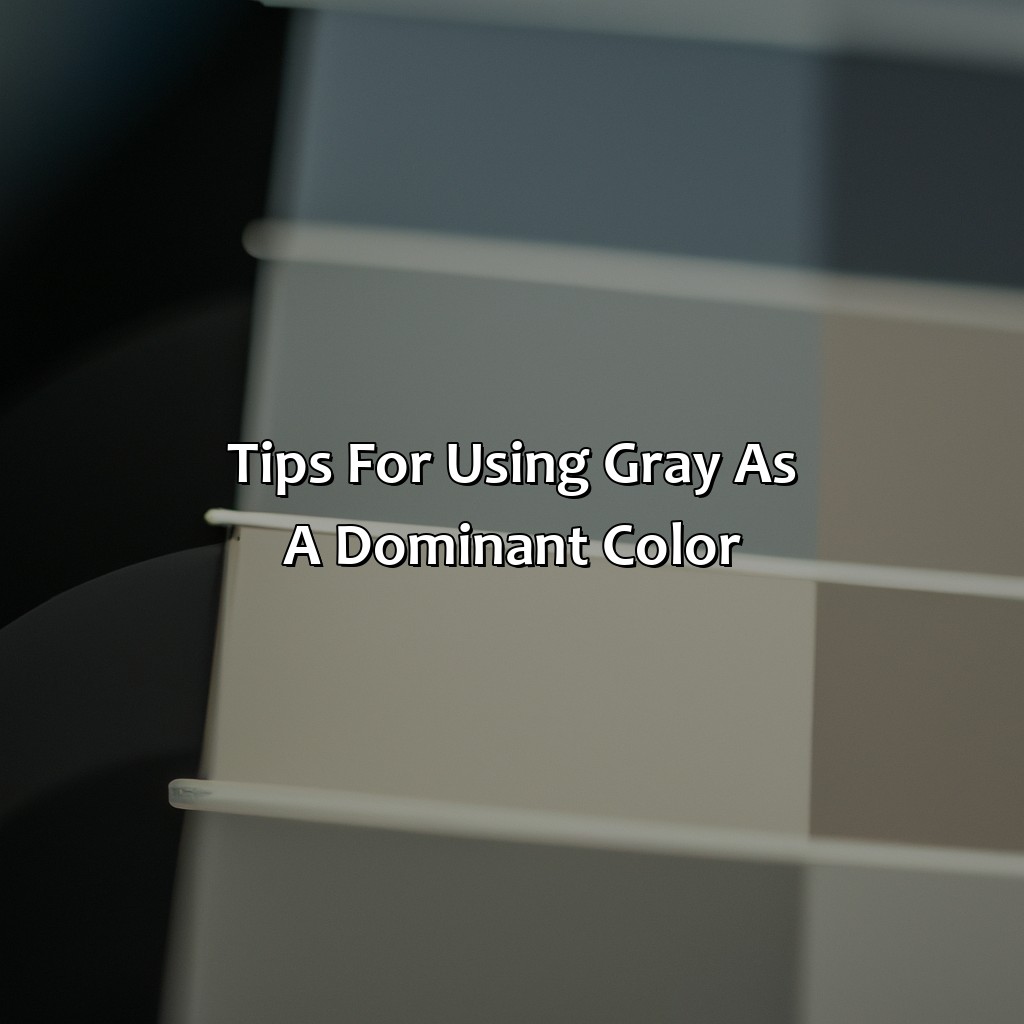
Photo Credits: colorscombo.com by Nathan Smith
When it comes to using gray as a dominant color, there are a few key tips to keep in mind. First, consider pairing gray with different textures to add visual interest and depth to a space. Second, playing with different shades of gray can create a cohesive and calming atmosphere. Third, using gray as an accent color can add a sleek and sophisticated touch to any room. Finally, mixing in pops of color strategically can help to balance out the cool tones of gray. By following these tips, you can successfully incorporate gray into your interior design in a dynamic and visually pleasing way.
Five Facts About What Colors Go With Gray:
- ✅ Gray is a neutral color, so it pairs well with nearly any other color, whether bold, vivid, or muted. (Source: The Spruce)
- ✅ Gray and white are a classic color combination that creates a clean, sophisticated look. (Source: House Beautiful)
- ✅ Pops of bright colors like yellow, turquoise, and fuchsia can add energy and personality to a gray room. (Source: HGTV)
- ✅ Gray and black create a dramatic and modern look, especially in fashion and graphic design. (Source: Elle Decor)
- ✅ Earthy tones like brown, beige, and green pair well with gray, creating a calming and nature-inspired palette. (Source: Better Homes & Gardens)
FAQs about What Colors Go With Gray
What colors go with gray?
Gray is a versatile color that can be paired with a wide range of other colors. Some of the best color options that go with gray include:
- Navy blue
- Pink
- White
- Black
- Green
- Yellow
Can you mix gray with other neutral colors?
Absolutely! Gray is a neutral color itself, so it pairs well with other neutrals like beige, tan, and taupe. This creates a warm and inviting atmosphere in any room.
What are some color combinations to avoid with gray?
While gray is easy to pair with other colors, some combinations may clash or look off. Avoid pairing gray with any bright, neon colors. They tend to clash and create an unpleasant visual effect.
What colors should I use with light gray?
For light gray, you’ll want to stick with lighter colors in general to create a cohesive look. Soft pastels and muted colors like light blue, lilac, and sage green all work well with light gray.
What colors should I use with dark gray?
With dark gray, it’s best to stick with deeper colors to create a bold, sophisticated look. Deep greens, plums, and navy blues all work well with dark gray.
Can I use more than two colors with gray?
Absolutely! You can use as many colors as you like with gray. Just be sure to choose colors that complement each other well, and consider using shades of those colors to create a cohesive look.
